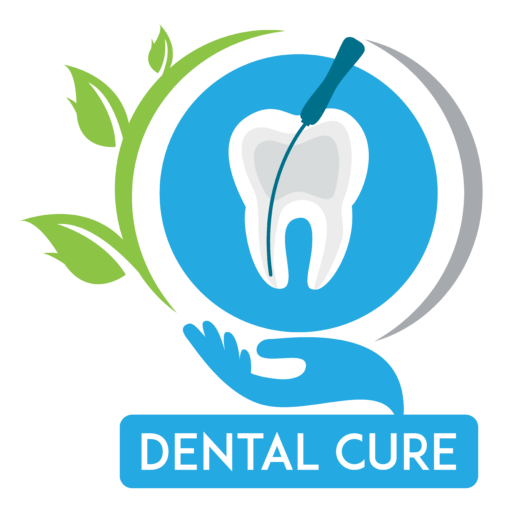Restorative Dentistry In Kids
Restorative dentistry in children is a vital aspect of a child’s healthcare system that deals with anomalies and dental problems and promotes proper growth and development.
What is restorative dentistry for children?
- Restorative dentistry is devoted to repairing or replacing damaged or missing teeth to restore functions and aesthetics.
- The children’s most frequently visited dental department is the therapeutic department, which treats various reasons such as tooth decay, trauma, congenital abnormalities, or developmental issues.
- Restorative dentistry in children’s care is applied to preserve the natural teeth and maintain good oral hygiene, thus preventing future oral issues.
Common Types of Restorative Dental Procedures
Dental Fillings
- The most common dental restoration is called a “filling.” It is used to fix cavities caused by tooth decay.
- As tooth-coloured composite resin fillings simply flow into the child’s natural teeth and can’t be seen, they are a good option for kids.
- Sometimes, combining fillings can be advised as they prove durable and cheap for primary teeth.
SSCs
- SSCs are prefabricated, silver- or gold-coloured protective caps placed over the top of a primary tooth with extensive decay or damage.
- They are firm and suitable for molars—usually the first to be affected by dental caries.
Pulp Therapy
- Therapy for pulp, including pulpotomy and pulpectomy, is done to remedy the momentous pulp in primary teeth.
- By pulpotomy, one removes infected pulp tissues from the crown portion of the tooth. At the same time, pulpectomy is more intrusive, requiring the removal of the complete pulp from the root-canal system.
Space Maintainers
- Space maintainers are artificial appliances custom-made to hold the space available for adjacent teeth in the developmental dental arch when the tooth is lost prematurely.
- Adjacent teeth are thus protected from drifting into the embraced space and are provided with a proper path for the eruption of permanent teeth.
Dental Crowns and Dental Bridges
- In some cases, dental crowns and bridges can be used instead of a cap that is put on a damaged or missing tooth.
- A crown is a tooth-shaped cap placed over a tooth which has been appropriately prepared to build up its size and strength, and a bridge is a component that fills up the gap of one or more missing teeth by being affixed to the adjacent natural teeth or dental implants.
Preventive Strategies in Pediatric Restorative Dentistry
Dental Sealants
- Dental caps are transparent plastic coatings that are applied to the chewing surfaces of the molars to stop plaque acids from forming and harming the teeth.
- They serve to restrict as they are a shield between germs and food particles, so they prevent cavities in the deep grooves and fissures of one’s teeth.
Fluoride Treatment
- Fluoride treatment provides a way to strengthen the tooth enamel and, consequently, protect against cavities.
- Fluoride varnish or gel applied to the teeth at a Dental visit allows additional enamel protection from cavities.
Oral Hygiene Education
Tailored lessons that stress the correct brushing, flossing and check-up habits would help children develop necessary preventive measures and good oral health.
Procedure for Restorative Dentistry for Children
- Initial assessment and diagnosis: This dentist takes the time to evaluate the child’s general oral health status and performs a detailed examination where he recognises any dental problems requiring attention.
- Treatment Planning: According to the diagnosis, the dentist makes a precise treatment plan for each child to fit his particular needs.
- Treatment Procedures: Restorative dental techniques designed especially for the kids’ characteristics and the beginning stage of their development are used to treat enamel defects of baby teeth.
Post-care and follow-up
- Once the dentist completes restorative dental care, the child is sent home with a guide on post-treatment care and hygiene maintenance.
- A follow-up visit is arranged to follow the healing process and evaluate treatment results, which might require any necessary changes.
FAQs relating to Preventive Dentistry in Children
Q: Will restorative dental therapies be a painful encounter for the children?
A: The modern techniques and materials are made in such a way that dental problem-solving is less painful as we have local anaesthesia to numb the treatment region.
Q: How long does an aggressive pediatric caries therapy last?
A: The period of restorative dental treatment is conditioned by many factors, such as the type of dental procedures, the oral hygiene habits and individual components. When restored carefully, some of them might last even several decades.
Q: Is restorative dental care included in the insurance plan?
A: Most dental insurance providers offer coverage for various types of children’s restorative dental procedures.
Conclusion
As an integral element of keeping oral health in order, childhood dentistry has a significant function in both handling dental problems and fostering the optimum growth of children. By getting insight into the common restorative dental treatments, preventive measures and post-treatment care guidelines, parents, caregivers, or dental professionals can work hand in hand to establish a standard for the oral health and the overall well-being of children. Regular dental checkups, proper oral care, and constant eating of healthy foods are the keys to having a healthy and beautiful, lifelong smile.
